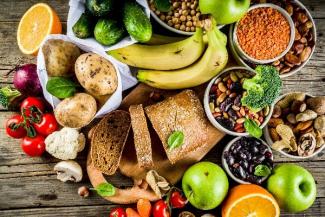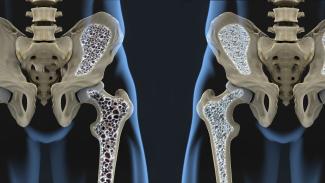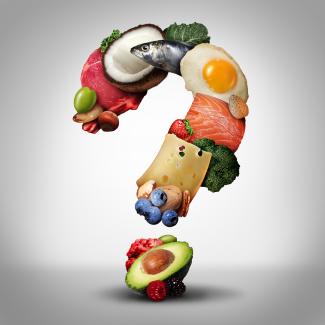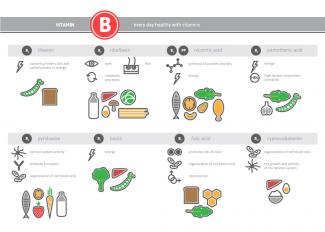The Benefits of Eating Seasonally
Written in collaboration with Dr. Michelle Lo, ND
Seasonal eating is a concept that is gaining popularity due to new revelations of how our body changes with the seasons. It is a relatively new trend based on an old practice, or more accurately, an old way of life. Before there were supermarkets in every town, people generally grew their own food. Neighbours may have traded with one another if there was an excess of a crop, but as much as was practical, food was stored for later use. Since cold storage was limited, root cellars were used to store those foods that would last a long time before spoiling. We started moving away from seasonal eating as the practice of canning fruits and vegetables extended the season for eating a variety of foods that would otherwise spoil in a short amount of time.
 Eating food during the season that it naturally grows has been shown to support a healthy metabolism that coincides with a change in activity levels due to the changing seasons. It is especially true when the diet consists of locally grown food, as seasons vary from region to region. This is one of the core beliefs in a very old way of life known as Ayurveda. Ayurveda is literally translated as “the truth of you,” where ayur means “life” and veda means “truth.” The goal is to live life with less stress, and to be physically and emotionally balanced. Seasonal eating is an integral part of Ayurveda, because it embraces and encourages our connection with nature, through which balance happens naturally. For this reason, Ayurveda will be referenced as the authority on seasonal eating principles. In the northern hemisphere, the seasons are broadly defined as follows:
Eating food during the season that it naturally grows has been shown to support a healthy metabolism that coincides with a change in activity levels due to the changing seasons. It is especially true when the diet consists of locally grown food, as seasons vary from region to region. This is one of the core beliefs in a very old way of life known as Ayurveda. Ayurveda is literally translated as “the truth of you,” where ayur means “life” and veda means “truth.” The goal is to live life with less stress, and to be physically and emotionally balanced. Seasonal eating is an integral part of Ayurveda, because it embraces and encourages our connection with nature, through which balance happens naturally. For this reason, Ayurveda will be referenced as the authority on seasonal eating principles. In the northern hemisphere, the seasons are broadly defined as follows:
Spring: March–June · Summer: July–October· Winter: November–February
Only three seasons are defined instead of the four traditional seasons, because Ayurveda identifies the three seasons of harvest. Each season of harvest has foods that meet our nutritional needs and helps us to transition from the current season to the next. Over the four-month period of each harvest season, a variety of foods become ready to harvest. Food which is harvested at the beginning of the season may not be available at the end of the season. This is part of the process of transitioning from one season to the next. And for this reason, you will often see the same food in two seasons that follow each other.
Summer
The summer season for the northern hemisphere is loosely defined as covering July through October. Typically the hottest part of the year, summer is when most fruit is harvested. If you have ever felt like you were too hot to eat a meal, you can appreciate what fruit has to offer this time of year. Fruit contains a lot of water, so it is immediately refreshing. The fructose (sugar) in fruit is a quick source of energy that is easily used by your body without the need for a lot of digestion. Eating the whole fruit is healthier than just fruit juice, because without the fibre in the flesh and skin, you would experience the same sugar high, then crash as with candy. The fibre helps keep your blood sugar stable over a longer period of time. Fruit also is high in certain vitamins like vitamin C, and minerals like magnesium, which strengthen your immune system and help your body to cope with the heat of summer. Each part of the fruit contains different vitamins and/or minerals, which is another reason to eat the whole fruit. Enjoy peaches, grapes, mangoes, raspberries, and oranges all summer long.

Summer is also the time when many vegetables are harvested. Most of the vegetables harvested during this time of year are heat-tolerant and contain minerals that are often lost through sweat and exertion. Examples of these are corn, broccoli, okra, cauliflower, tomatoes, pumpkin, and avocado. The late-summer harvest of fruits and vegetables assists your body in releasing the heat that has been there all summer long. As summer wanes, blood vessels are less dilated in preparation for keeping heat inside the body. Excess summer heat that carries over into the winter causes skin and mucous membranes to become extradry and irritated. Eat plenty of watermelon, apples, and pomegranates to help cool your body before winter starts. Beans, legumes, and nuts are harvested toward the end of the summer season, and carry over into the winter season. They are high in protein, are easily stored, and make great transition foods. Meat and dairy, which should have been consumed in moderation during the summer months, will be increased in the winter season.
Winter
Depending on where in the northern hemisphere you live, cold weather may make winter seem like the longest season. Unlike summer, winter is the season that you want to encourage your body to store fat to keep your body heat deep inside. As the days begin to get shorter and cooler, our metabolism begins to slow. During the summer, you could practically live off of fruit and salads, but the crisp winter air stirs up a hearty appetite. The body seems to instinctively know that the pounds shed during all the summer activity need to be put back on for the winter. As the days get colder and colder, we begin to crave hot, heavy meals like beef stew with rolls, or French bread with butter. The winter season of harvest contains food that are easily stored and can be enjoyed all winter long. Root vegetables like carrots, onions, potatoes, garlic, and ginger will keep quite a long time in a cool, dark place; so will pumpkins and winter squashes, as will grains like wheat and oats. Winter is the perfect time to spice up your meals with hot peppers and chilies. Use spices liberally with your meals. Cook all vegetables. Avoid cold foods such as ice cream or anything straight out of the refrigerator. Enjoy healthy fats from seeds and nuts, and avoid processed oils such as canola, soy, and corn oil. Butter and whole-milk dairy products are also good for you; avoid low-fat and fat-free dairy. The protein and fat of meat will help keep you warm by providing your body slow-burning fuel that will sustain you for longer periods than just fruits and vegetables. Longer digestive processes cause us to move a little slower as well, just like the rest of nature. Winter is a time of rest and rebuilding. Nights are longer, encouraging less activity and more sleep. It is a great time to recover from burnout or overactivity of the summer.
Spring
Next comes spring, which is roughly March through June in the northern hemisphere. Further north, where snow lies on the ground throughout winter, the beginning of spring is marked by new plant growth under the snow. Even before it is visible, deer and other animals know that grass has started to grow under the snow, and they seek it out. After a long winter without fresh vegetation, these first signs of spring signal that new life will soon be coming forth everywhere. With the body fully rested and recovered, spring awakens in us, as in all of nature. Spring is a time for cleaning out the den, so to speak, and for getting ready for the fast pace of summer. The food that naturally grows during this season helps our body transition from a diet heavy with protein and fat to one of mostly raw fruits and vegetables. Spring greens and citrus fruits are very alkalizing, and the best foods for “detoxing” your body. You no longer want to be holding your body heat deep inside your body, but instead want to be able to keep cool as the days get warmer and our activity increases. Excess weight stored over the winter will gradually begin to be burned as the diet includes more fresh fruits and vegetables as well as fish, and less meat, nuts, and breads. Early spring vegetables like peas and beans are rich in protein, vitamins, and minerals, and assist our body in the transition away from the more acidic meats of beef, pork, and chicken. They are easily digested without generating a lot of body heat, while providing the body with enough protein to strengthen muscles that are being used once again. Fruit such as strawberries, blueberries, cherries, lemons, limes, and oranges seem to almost taste like the sun itself, and should be consumed liberally. Just remember to eat the whole fruit, and don’t just drink fruit juice!
Conclusions
With the ability to buy most food year-round in supermarkets, it can be a challenge to know which food grows in which season. It can also be a challenge to discipline yourself to limit your favourite foods outside of the season in which it naturally grows in your area. The hardest part is getting started, but once you do, you should notice that, over time, your body will naturally begin to crave certain types of foods that coincide with the season. Try to pay attention to the signals your body gives you, and follow up on those signals. Nothing terrible will happen if you eat a food out of season, but some pretty amazing things will happen when you choose to eat seasonally more often than not. The benefits of eating seasonally include increased energy, better sleep, less digestive issues, easier-to-maintain weight, increased immune function, positive mood, and a general feeling of wellness. Give it a try today!


































